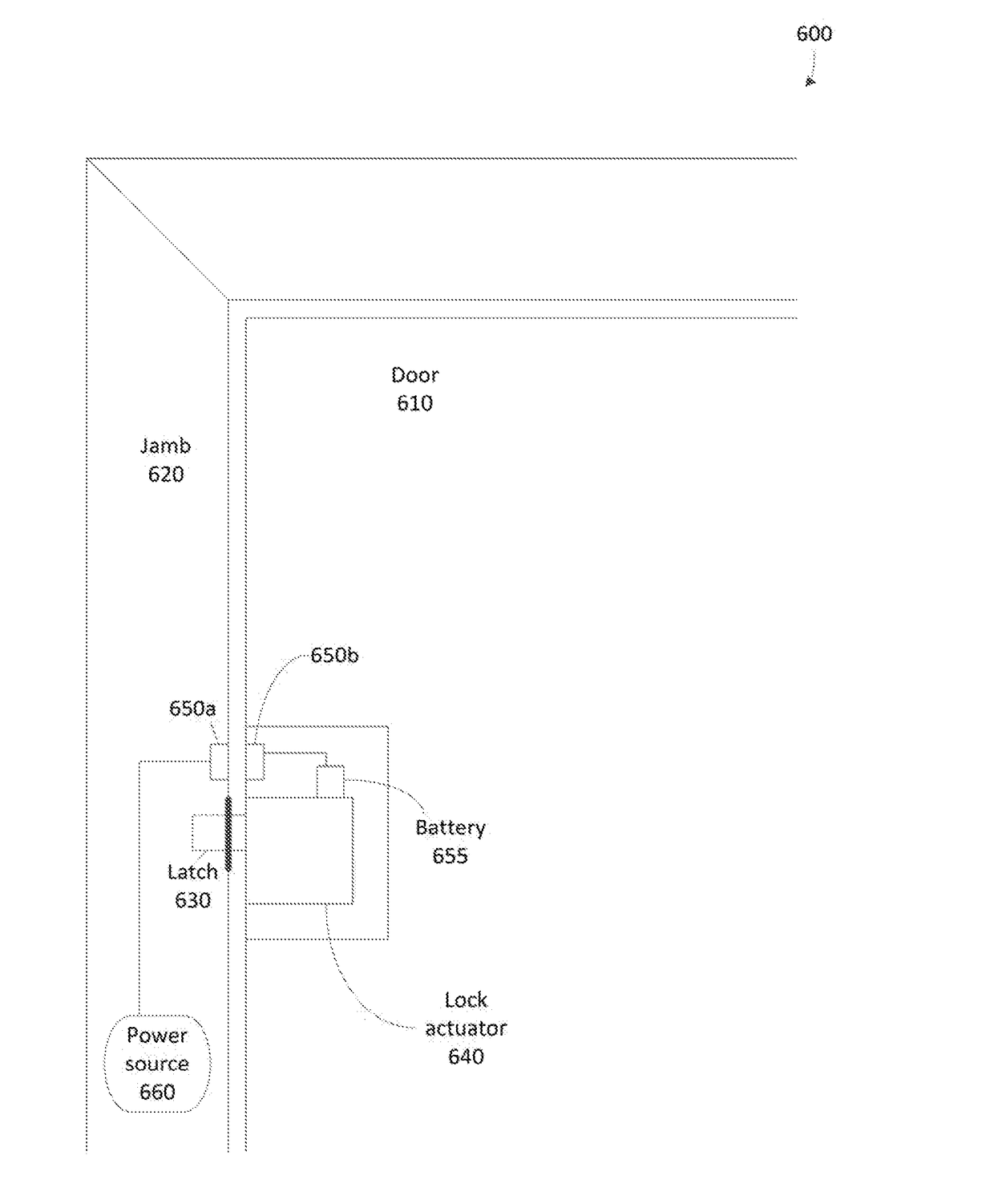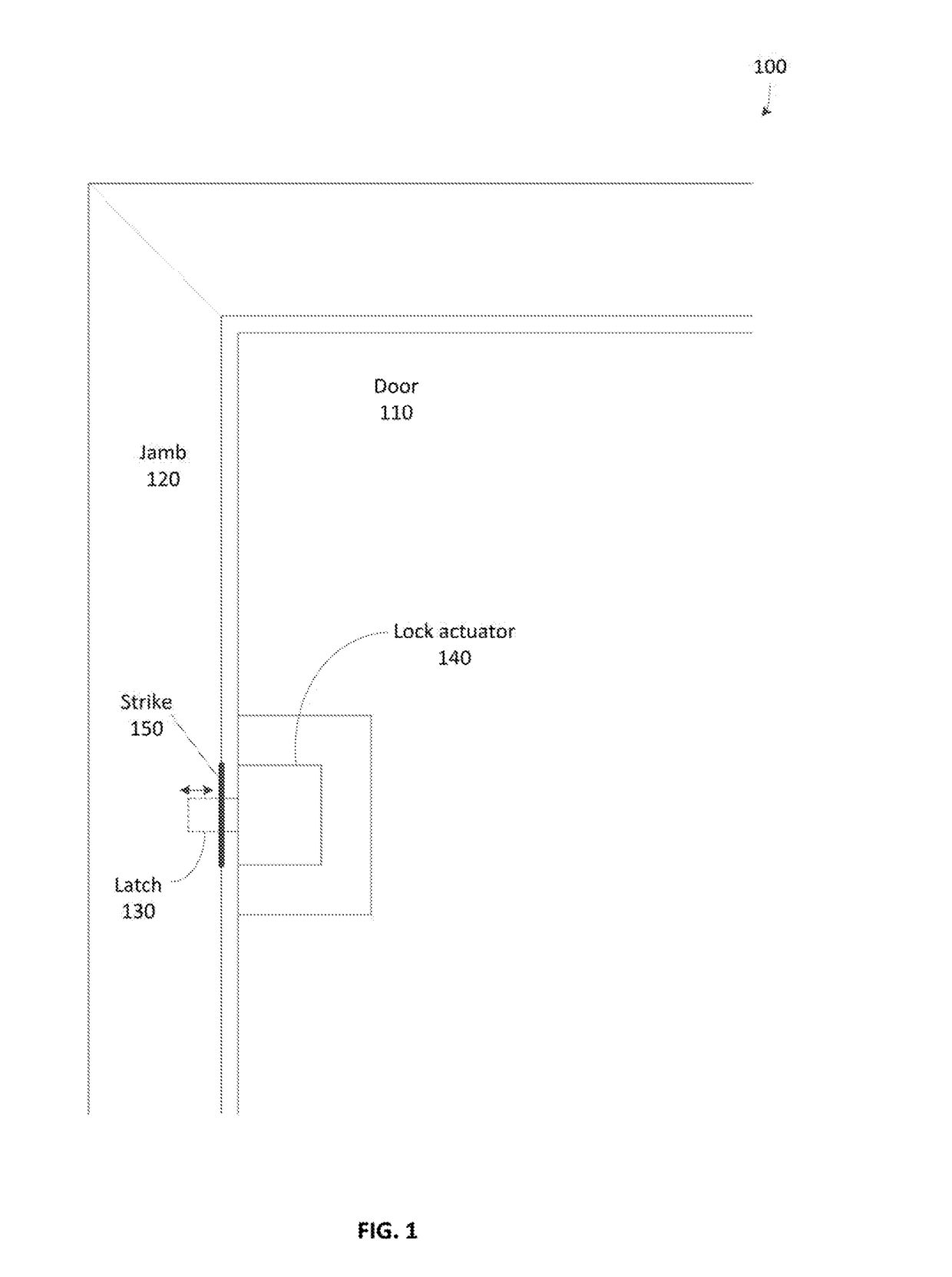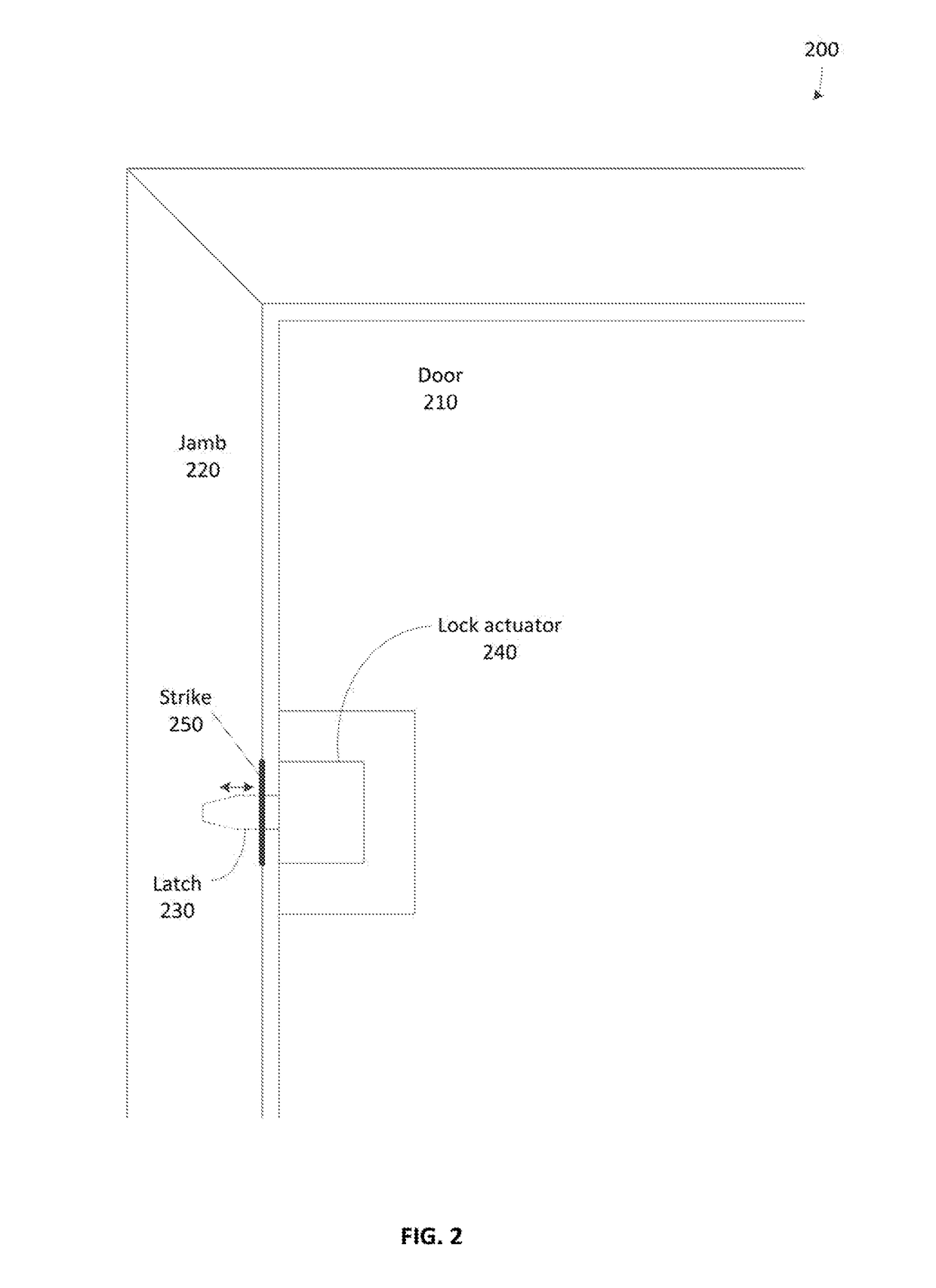Door lock
a door lock and door lock technology, applied in the field of door locks, can solve the problems of difficult implementation of electrically activated home door locks, unfavorable users, and inability to perform general functions,
- Summary
- Abstract
- Description
- Claims
- Application Information
AI Technical Summary
Benefits of technology
Problems solved by technology
Method used
Image
Examples
Embodiment Construction
[0033]According to an embodiment of the disclosed subject matter, a door lock apparatus is described herein, comprising a male component; a connection to a power source; a lock actuator, powered by the power source and configured to move the male component at least partially through a strike and into a box beyond the strike in the path of the male component to lock a door, wherein the male component comprises a plurality of parallel subcomponents oriented lengthwise in the direction of a path of the male component; a bed of sensors positioned in the box and configured to sense a number of parallel subcomponents that contact the bed after the male component has been moved into the box; and an alarm in communication with the bed, wherein an alert or alarm condition is triggered when an attempt is made to lock the door and an insufficient number of parallel subcomponents contacting the bed has been sensed by the bed of sensors.
[0034]In an embodiment, a door may be locked by the movemen...
PUM
 Login to View More
Login to View More Abstract
Description
Claims
Application Information
 Login to View More
Login to View More - R&D
- Intellectual Property
- Life Sciences
- Materials
- Tech Scout
- Unparalleled Data Quality
- Higher Quality Content
- 60% Fewer Hallucinations
Browse by: Latest US Patents, China's latest patents, Technical Efficacy Thesaurus, Application Domain, Technology Topic, Popular Technical Reports.
© 2025 PatSnap. All rights reserved.Legal|Privacy policy|Modern Slavery Act Transparency Statement|Sitemap|About US| Contact US: help@patsnap.com



